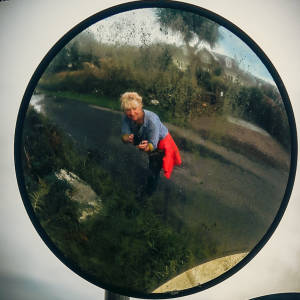Sheep's Head Way 2: Boolteenagh to Glanlough
The forecast looked good, so we donned our boots and set out to tackle the second part of the sheep's Head Way - part 1 having been completed on sunday. We started high up at Boolteenagh and continued along the ridge of the peninsula with amazing views on each side. It was cloudy but with pockets of sunshine so different areas were constantly being lit up. To begin with it was totally calm, almost eerily so, but as we progressed the wind kicked in. It's one of those hikes that go up and down a lot - we thought we'd reached a summit and then lo and behold another one popped up.
A fascinating walk though. Boolteenagh comes from the Irish Buailtenach, meaning summer pasture and refers to the old tradition of booleying where families moved with their cattle to uplands during the summer months (transhumance by another name). Temporary booley huts were made out of stone or turf, covered with rushes and gave some basic shelter. We passed a couple - hard to tell how old they were but they were tiny with thick walls. I think here it was older children or women who took the cattle up and stayed with them over the summer.
We also investigated a tiny homestead - a one roomed cabin with sturdy walls, neatly enclosed by its own walls, with a little outhouse on the back. You could still make out the small fields they would have farmed. Two windswept hawthorns added an ancient feel to the place. After that we continued to Lochnafoila - or Lough of the blood. In one of the many dips a reed filled lake suddenly appeared - very beautiful but quite spooky. The grim name comes from a grim story. During one very hot summer, the cattle were brought down to drink but the lough was dry. They became maddened and attacked each other and drank each others blood. Crikey.
We passed lots of little cairns and a trig point and ate apples and cheese nestling in the long fahane grass. The heather and gorse looked wonderful, and I also spotted some sundews lurking at the edge of the bog. We saw swallows and larks, and a couple of choughs but this beauty was highly exciting. I've just tried to identify him and the nearest I can find is a swallowtail caterpillar.This seems highly unlikely but not impossible. Anyone any ideas? He was large and very handsome.
This view shows the last leg of the journey, for that's Glanlough in the distance, surrounded by a patchwork of emerald green fields. Worth biggifying for TJ lives down to the centre right - can you spot a polytunnel - that's hers!
The sun is struggling to come out - will I struggle in for a swim?

Comments
Sign in or get an account to comment.


